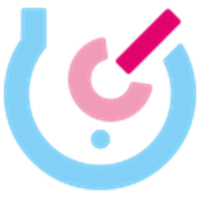Postnatal Care
Definition
Postnatal Period: the period that extends from delivery up to 6 weeks postpartum. More than half of maternal deaths occur in the postnatal period, 40% of them in the first 24 hours after delivery.
Immediate postnatal period: period between delivery of the placenta and the first 2 hours after delivery. Also referred to as the fourth stage of delivery
Normal features
Uterus:
- Just after delivery: uterus is contracted just below umbilicus level
- During the first 5 days: uterus contracts each day around 1 cm which is approximately 1 finger diameter below the umbilicus each day. At day 5 postpartum it should be between umbilicus and symphysis pubis
- Day 10 postpartum: uterus is at symphysis pubis and cervix is closed.
- Week 6: uterus has recovered its normal size.
Bleeding/Lochia:
- Bleeding is moderate to heavy during the first 3 days and starts decreasing progressively. Lochia become blood stained and are odourless.
- Bleeding usually stops between 2-3 weeks postpartum – First menstrual period in clients that are not breastfeeding happens 6-8 weeks postpartum.
Breastfeeding:
- Day 0-2 postpartum: secretion of colostrum, a yellowish secretion in small quantity which is highly caloric.
- – Day 3-5: first days of breastmilk production accompanied by breast tenderness and possible febricula
Recommended Postnatal Care Routine
The postnatal period requires specific monitoring for mother and newborn:
- Close monitoring in the immediate postnatal period (first 2 hours after delivery)
- Admission in the health facility for 24 hours for all mothers and newborns after a normal u delivery
- At least 4 postnatal check-ups in the first 6 weeks:
- D1: during admission and upon discharge
- D3: for C-S the check-up will be done while admitted. For normal deliveries that were already discharged it is advisable that the client attends a follow up visit. Home visits performed by a skilled attendant are a valid alternative.
- D7-14: Outpatient follow up.
- Week 6: outpatient follow up.
Immediate postnatal period
- Requires special attention as the majority of PPH occur during the first 2 hours after delivery
- Monitoring of mother: vital signs (BP, pulse, RR and temperature), uterine contraction, and bleeding every 15 min the first hour and every 30 min the second hour.
- Monitoring of baby: HR, temperature and RR every 30 min the first 2 hours of life.
- Encourage and support mother-to-baby skin-to-skin contact and early breastfeeding.
- Encourage passing urine.
- For the baby within the first hour of life provide essential and routine neonatal care.
- During the first 24 hours following the birth, all clients will be monitored for:
- Bleeding
- Uterine contraction and fundal heighEpisiotomy/perineal tear healingVital signs every 6-8 hoursSigns of anemia.Urine void should be documented within 6 hours of birth.BreastfeedingEmotional wellbeing
- Early mobilization








